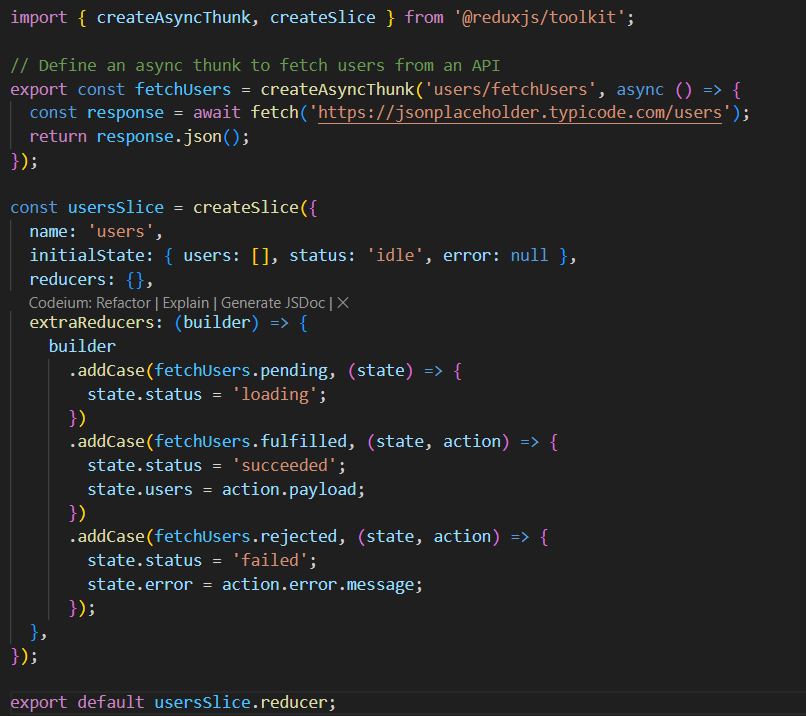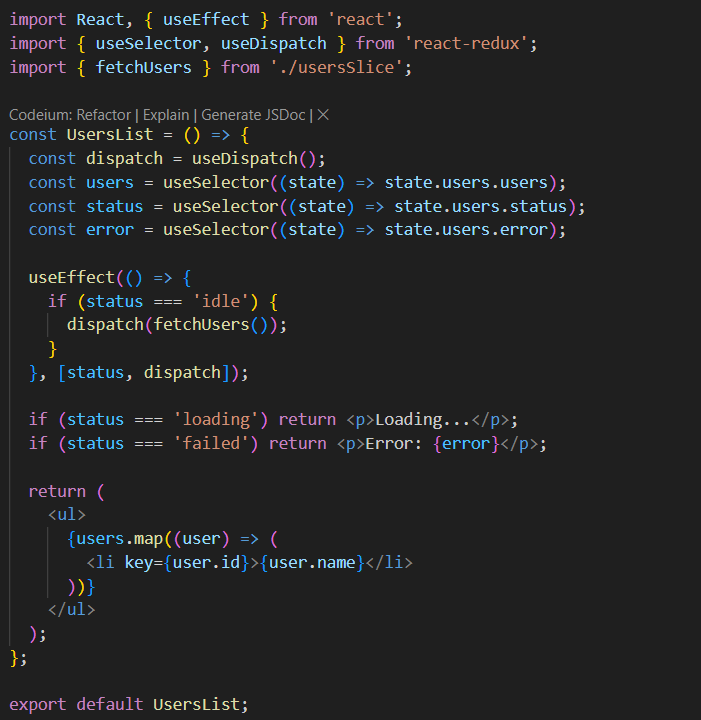Modern applications often rely on asynchronous operations, such as fetching data from an API or interacting with a database. Redux, by default, is synchronous, meaning it cannot handle asynchronous actions like API requests on its own. That is where we use Redux Thunk. In this blog, we will explore Redux Thunk and how it helps manage asynchronous operations in Redux.
1. Understanding Redux Thunk
Redux Thunk serves as a middleware that enables action creators to yield a function rather than a standard action object. This function can execute asynchronous operations, such as retrieving data, before dispatching an action to modify the state.
Installing Redux Thunk:

Redux Toolkit includes Redux Thunk by default, so no extra installation is needed if you're using @reduxjs/toolkit.
2. Writing an Asynchronous Action with Redux Thunk
Suppose we need to retrieve a list of users from an API. Instead of dispatching an action immediately, we can return a function that performs an API request and dispatches different actions based on the response.
Creating an Async Thunk:

This createAsyncThunk function automatically generates pending, fulfilled, and rejected action types, simplifying async handling.
3. Dispatching Asynchronous Actions in Components
We use the useDispatch hook to trigger our async action in a React component.

This component fetches users when it mounts and displays them in a list.
Conclusion
Redux Thunk is a powerful middleware for handling asynchronous operations in Redux. By using createAsyncThunk with Redux Toolkit, we can efficiently manage API calls, loading states, and errors. In the next blog, we’ll explore Advanced Redux: Redux Toolkit and RTK Query, where we’ll dive deeper into optimizing API interactions with RTK Query.
